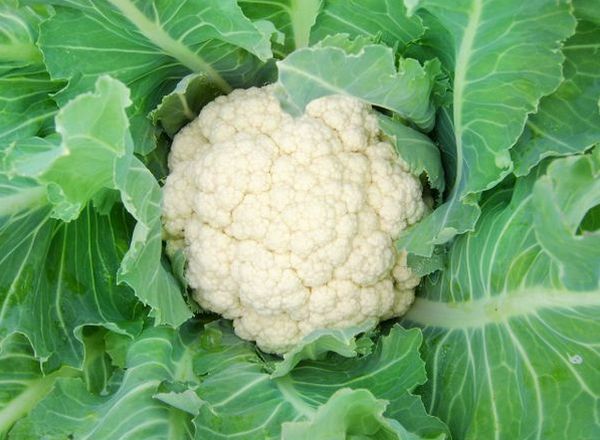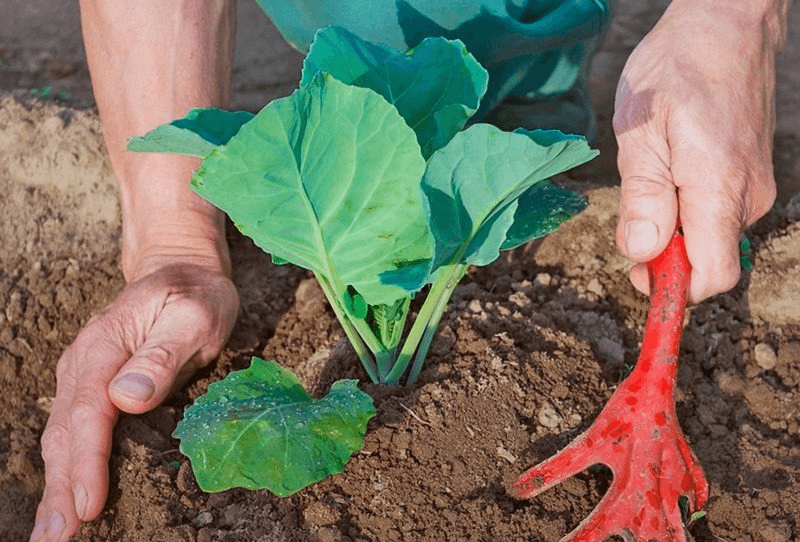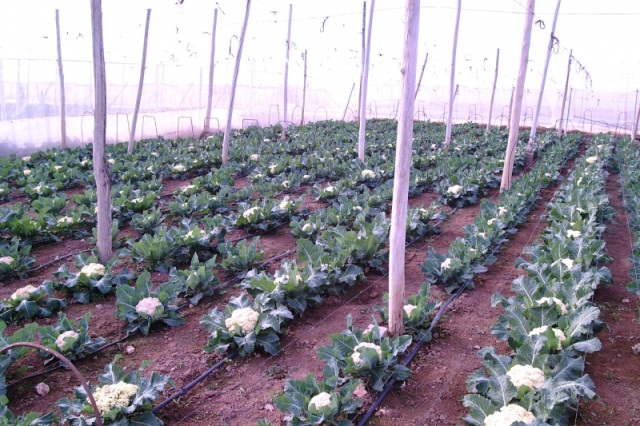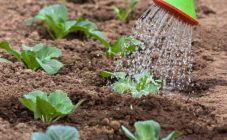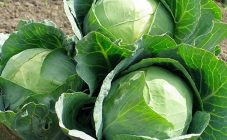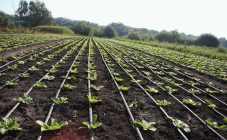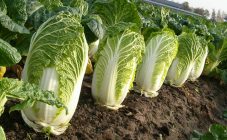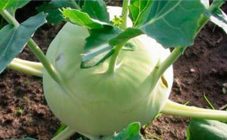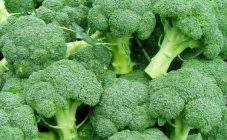Content:
Of the rich cruciferous family, cauliflower is one of the most unusual and popular annual vegetable plants. In Russia, the vegetable is grown everywhere, right up to the Leningrad region, along with its white and red relatives. High nutritional value, ease of preparation, hypoallergenicity and good keeping quality are not the only advantages of cauliflower.
Popular varieties of cauliflower
Like many other garden crops, cauliflower has varieties of different ripening periods: early (ripening takes up to 100 days), mid-season (130 days) and late (more than 130 days). Each is good in its own way:
- Snowball - early white variety. The weight of the head of cabbage reaches 850 g. The plant is resistant to diseases and drought. It is grown exclusively in seedlings.
- Express - an early variety with a white head with a slight yellowness, distinguished by its modest size - up to 500 g. It is famous for its pleasant taste and resistance to bacteriosis. Since we are loved by many pests, it is recommended to grow under cover.
- Movir-74 - an early hybrid with a bumpy white head weighing up to 1.2 kg. It tolerates drought well, as well as sudden cold snaps in May. In greenhouse conditions, it gives 2-3 harvests per season.
- Flora Blanca - mid-season variety of Polish selection with heads of cabbage up to 1.2 kg. Differs in high keeping quality, as well as resistance to cold snaps in spring and autumn.
- White Beauty - a mid-season high-yielding variety with large heads weighing 1.2 kg or more. Differs in low resistance to disease and pests. Experienced gardeners are recommended to plant this cauliflower.
- Cortez F1- high-yielding late hybrid. White heads of cabbage reach a weight of 2 or even 3 kg. Very picky about soil fertility.
- Amerigo F1- a late hybrid with large white heads of cabbage weighing an average of 2.5 kg. Resistant to drought and heat, as the leaves cover the head of cabbage at the hottest time of the day. Needs regular abundant fertilizing with mineral fertilizers.
Depending on climatic conditions and tasks, you can choose a variety of cauliflower with a preferred head weight and ripening period. Since all kinds of pests are very fond of eating the leaves and heads of cauliflower of any variety, a lot of effort will have to be devoted to fighting them.
Planting cauliflower
The vegetable is native to the Mediterranean, but well acclimatized in almost all regions of Russia. Cauliflower is planted in the Urals, Siberia, as well as Central and, of course, in the Black Earth regions. According to observations, for the formation of a dense head of cabbage, a sufficient duration of daylight hours and always night is necessary. In the northern regions, those varieties are planted that ripen from June to July. Almost everyone needs proper additional watering.
The optimum temperature range for growing cauliflower is between +15 and + 20 ° C. At higher temperatures, shading and even spraying is needed, and at lower temperatures, shelter is needed. There must be ventilation in the greenhouse. In the south, for a long season, you can freely get 2 or even 3 crops. But you will have to plant cauliflower according to all the rules of agricultural technology.
Sowing seedlings
How to plant cauliflower and then care for your seedlings? Plants will need sensitive grooming from day one to achieve good results. The time of sowing seedlings is calculated so that after 45-50 days it can be freely planted in the garden.
Before sowing, it is recommended to soak the seeds for 12 hours in water at room temperature. Then the sowing is carried out in specially prepared containers. At the bottom, there must certainly be expanded clay or broken brick, crushed stone for drainage. The soil is bought in a store, choosing a universal one, or prepared independently in the following proportion:
- 35% - garden land;
- 30% - peat;
- 30% - black soil;
- 5% - sand.
Newly appeared seedlings are often threatened by a fungal disease - a black leg. To protect against it, the seeds are sown to a depth of 1 cm, and then the surface of the soil is covered with a thin layer of fire-calcined sand. This will prevent excess moisture. After sowing, the soil is moistened, covered with foil and placed in a warm place.
Even before the emergence of shoots, the root system must first develop. For this, the seedlings are kept at a temperature of + 10 ° C. This technique allows you to slow down the growth of the ground part of the cabbage, but the roots will grow intensively. After 7 days, the seedlings are transferred to a place where the temperature is maintained at + 15 ° C. This will allow the sprouts to start growing, but not stretch out due to lack of sun. Fluorescent lamps and reflective screens are installed above the boxes.
The pick is carried out 10 days after the emergence of shoots. Transplanting into cups is performed so as to deepen not only the existing roots, but also the entire ground part of the stem to the first leaves. In the phase of the third leaf, top dressing is performed with a solution: for 10 liters of water, 15 g of potash + 5 g of ammonium nitrate. The solution is prepared in advance, and then used when watering.
After the development of 4 leaves, the seedlings are re-fed. In the morning, it is recommended to spray the seedlings with clean warm water or a weak solution of boric acid. With the appearance of 5 leaves, it is necessary to transplant to the garden. At least a week before transplanting the cauliflower, you need to harden the seedlings. They start at 1 o'clock in the open air after 2 pm, after which they are brought back into the house. Daily "walk" time is increased by 15 minutes.
Landing in open ground
The key to an excellent harvest is the optimal lighting regime for young shoots. Only the sunniest beds are suitable for cauliflower. The root system of cabbage is mainly located in the upper soil layers. That is why, at a depth of 40 cm, the soil on the site must be saturated with nutrients. A bed for cauliflower is prepared in the fall, adding not only organic matter, but also mineral dressings to it. If the soil is acidic, then a small amount of lime is added when digging.
On the beds, rows of cauliflower are planted according to a scheme so that a distance of 50 cm is maintained between individual plants. The holes for seedlings are made so deep as to accommodate all the roots and stem to the leaves. In addition, a spoonful of complex mineral fertilizer mixed with soil is poured into the hole under each sprout.
In the first 2 days, planting should be shaded from the scorching sun. At the same time, pests will attack the garden. Fleas, aphids, cabbage and cabbage fly will appear as if by magic. Pollination of the beds with ash helps against them. Garlic, rosemary, basil should be planted around the planting - they scare away many insects with their smell.
Features of growing and care
Care and watering are important for the formation of dense heads of cabbage. At the same time, cabbage does not like waterlogging. The roots can rot during stagnant water. It is optimal to use not just a hose, but a special nozzle with a spray that evenly covers the heads of cabbage with fine water dust. Loosening cauliflower is a must-do routine. Roots don't like dense soil, they need air. This procedure improves aeration.
2 weeks after planting cauliflower seedlings in the beds, they are fed with organic fertilizers. Fresh manure is not suitable for this purpose. It is first diluted in water and kept for 3 days. Then it is diluted in a 1: 5 ratio with water. This diluted composition is suitable for watering.
The cauliflower stalk should not stick out of the ground. If this happens, hilling is necessary. They scoop up the soil from the edges of the garden with a chopper, sprinkling each plant tightly. The next feeding is necessarily performed in the phase of forks formation. Complex mineral fertilizer is suitable for this.
Since plant pest infestation is a harsh reality, the use of insecticides is often a necessary protective measure. Chemicals are used before the heading process begins. For preventive purposes, you can use tincture of wormwood, burdock, tobacco. To improve the taste of the crop, it is recommended to use shelters that protect from too hot sun. You can cut off the excess lower leaves and cover the inflorescence with them. This method will help prevent the appearance of bitterness, as well as darkening of the inflorescences.
Caring for cauliflower in the greenhouse
In greenhouse conditions, cauliflower, like broccoli, is capable of producing up to 3 harvests per year. The owner's task is to maintain a favorable temperature regime, regular airing, and feeding. With a short light day, artificial lighting is used. In the morning, all plantings are necessarily sprayed with warm water, but after lunch, windows are opened to ventilate and remove excess moisture.
At the moment when ovaries appear on the cabbage, the seedlings are sown for the second term. The greenhouse is also used for growing late-ripening garden crops. For this, heads of cabbage are dug from the beds and planted in greenhouse boxes. It is important to ensure that the cabbage is not exposed to temperatures below + 15 ° C.
Harvesting and storage
When the cauliflower heads are technically mature, they are cut with part of the stem and 4 leaves. Cutting to the inflorescence level is not recommended, since in this case the head of cabbage will wither too quickly and begin to deteriorate. In refrigerators at a temperature of + 4 ° C, the crop can be stored for up to 50 days. In the basement, the shelf life reaches 4 months (especially for late varieties).
The gardeners' love for cauliflower is more than justified. The tremendous health benefits of eating this vegetable have been proven in numerous scientific studies.Difficulties in growing are not deterred, because modern methods can be successfully combated with a lack of illumination, and with diseases and pests.
This vegetable is most demanding in relation to illumination. It has been noticed that where there are white nights, it is extremely difficult to get strong cauliflower forks. Darkness is necessary for the plant, as well as bright light during the day. However, the efforts invested in cultivation will certainly return a hundredfold, since a self-grown crop will keep the whole family healthy for a whole year.
